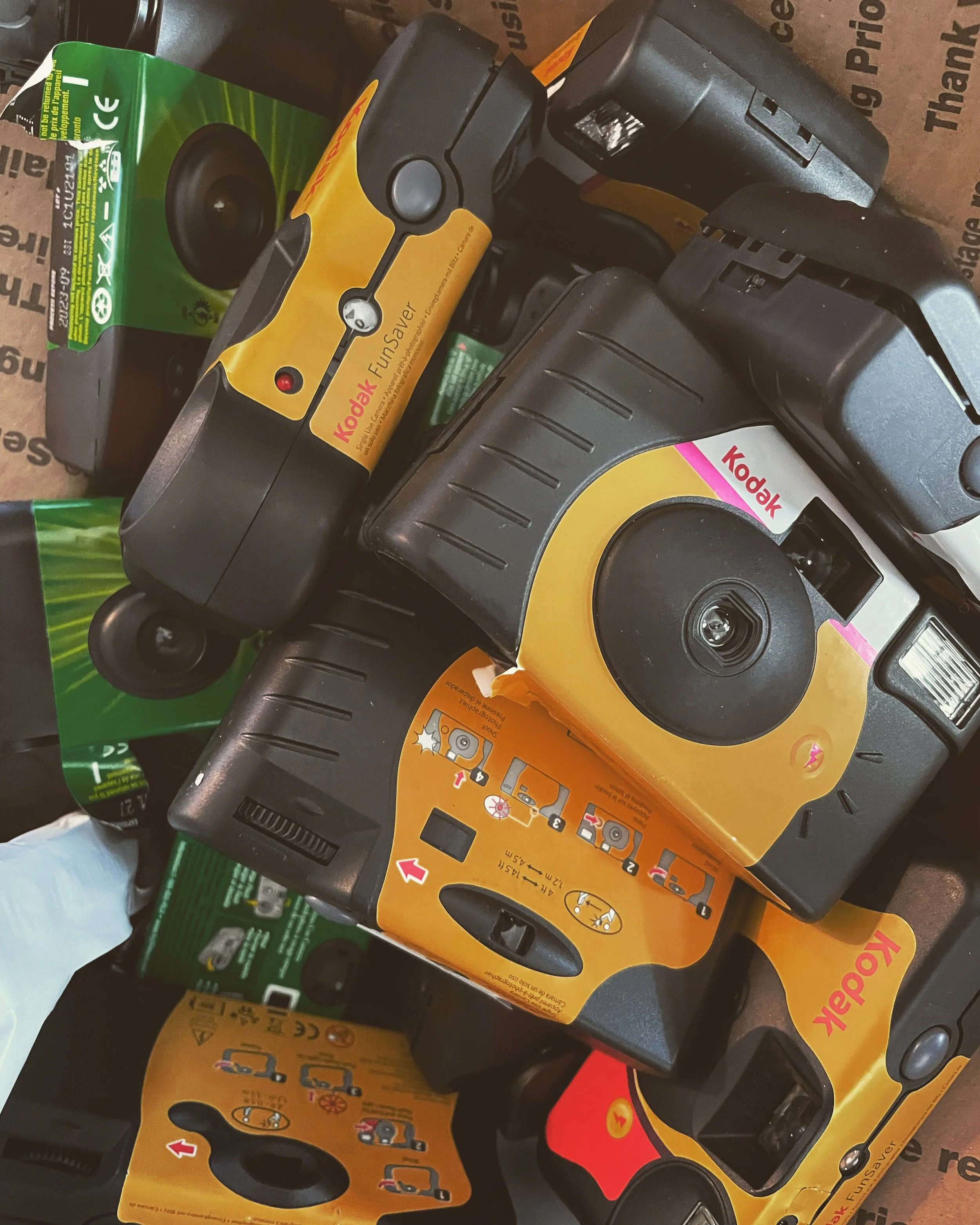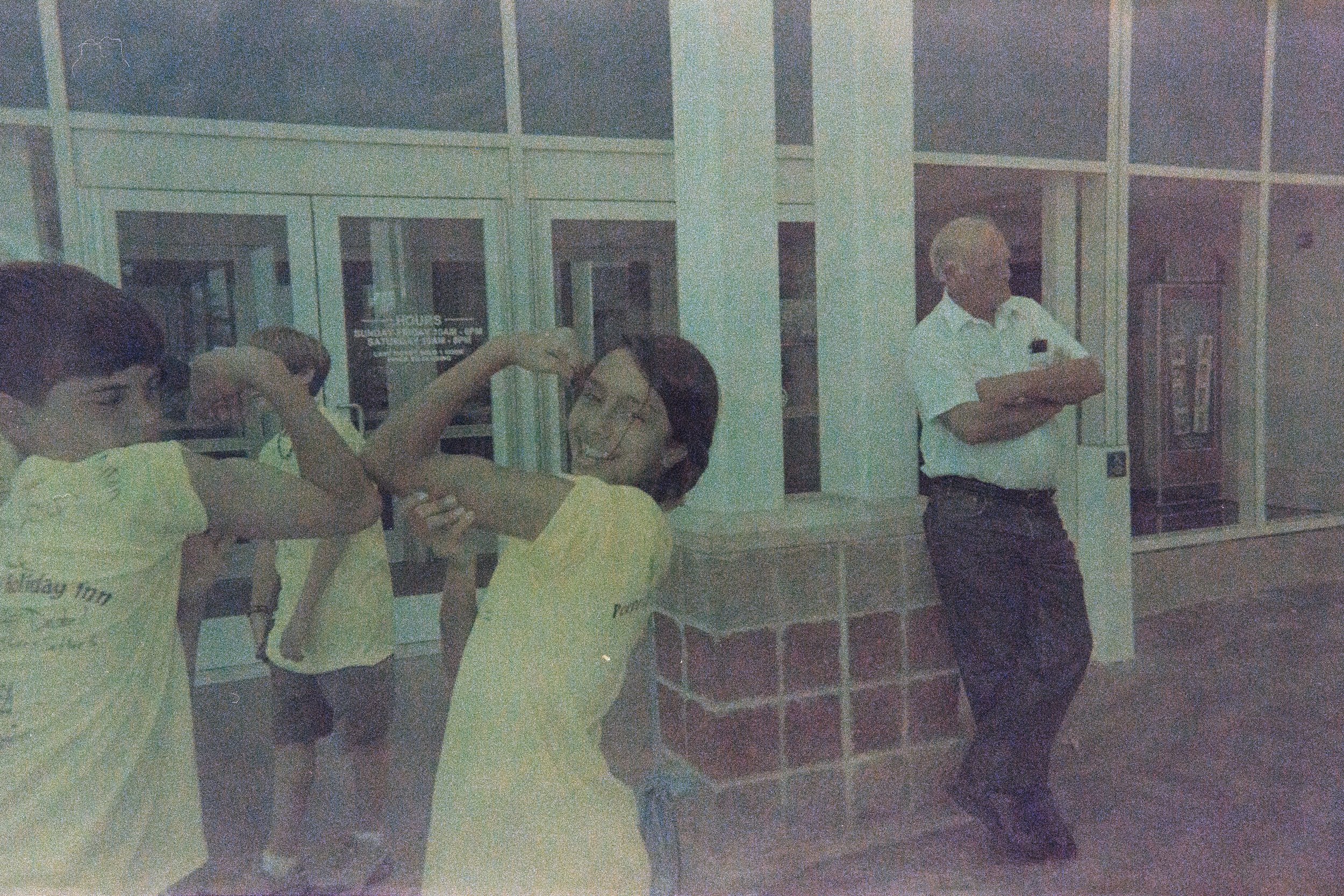Not too long ago, we had a big ‘clean-up’ day at our house. Like a lot of people, we had collected too much clutter and needed to purge our house of all of the junk and random things that were just laying around, collecting dust. None of us were looking forward to it. I ended up being assigned the oh-so-much super fun role of cleaning out the random draws in our house. As I went through the seemingly endless odds and ins we had for some reason decided to save over the years, I made a discovery! A discovery that immediately ended my drawer duties, much to my wife’s frustration. In one of the drawers, tucked away for over 15 years, I found 6 disposable cameras! I had no idea they were there! My wife barely remembered putting them in the draw, but now could not remember what was on the cameras. For a photography and film nerd like myself, finding old disposable cameras or old film is like finding a treasure chest. Who knows what memories and images could have been taken. I was beyond excited!
Many of you have come across old disposable cameras as you’ve cleaned. Maybe they were yours, or maybe they belonged to one of your kids, or maybe another family member, but regardless, once they are found the question arises: “Can you develop old disposable cameras?”
Can You Still Develop Old Disposable Cameras?
The short and simple answer is yes, you can still develop them! The real question is, will we get any viewable images out of our old disposable cameras? And to answer that question, we’re going to have to consider a number of factors.
What can damage photographic film?
How film works is nothing short of a miracle. Silver bromide and dyes and other layers are applied to a thin film that when it works together are light sensitive and can even display color! There are so many chemical and physical aspects to film, but we don’t want to get too deep here. Let’s discuss the big issues. Heat is one of the biggest things that can damage the film. I’ve developed disposable cameras that have lived in the trunk of a person’s car for several years. Let me tell you, those images were a disaster. The images I was able to salvage had extremely distorted colors and the worst graininess I’ve ever seen. Most of the contrast was washed away also. The images reminded me of being a kid in the 1980s trying to get reception on a certain TV station only to be able to barely get a signal. You could tell there was something there, but not clearly enough to have usable to viewable images.
Besides heat, moisture can have a huge effect on the film. It is possible that moisture in the form of condensation can build up on the inside of the canister even (inside of the disposable camera). Moisture inside of the canister can damage the emulsion or cause abnormal effects with the film itself. Heat and moisture are the enemies of exposed film! But there are ways to battle heat and moisture. Exposed film has two more enemies that cannot be prevented.
One of those enemies is gamma radiation. Gamma radiation is all around us, causing issues all the time, but the older undeveloped film gets, the more it is affected by gamma radiation. According to Kodak, gamma radiation has an effect on the image effectiveness of the film, but it mostly increases the appearance of grain and fog in the image. The older the film gets, the grainier it is going to become. I’ve developed some films that are 20 to 30 years old and have terrible amounts of grain that really begin to distract from the image.
The other issue that drastically affects older undeveloped disposable cameras is the natural order of the energy and the chemistry that makes the film work. Essentially capturing photons in the form of electrons in silver-bromide, during the development process those molecules are transformed into fixed silver which creates an image. Until the film is developed, you actually don’t have an image on the film. Rather, it is a latent image made up of captured energy. And like all prisoners, that energy just wants to escape. Over long periods of time enough can escape to really degrade the quality of your image.
How I can slow this natural decay?
Storing your Disposable Cameras in the fridge helps! Keeping the film cold prevents those electrons from breaking free and making a run for it. But even cold storage will not delay decay for long. Most exposed films need to be developed within 6 months of shooting. Any time after 6 months, your images are going to start to break down. Now, don’t get me wrong, this is a very slow process. Disposable cameras that are 2 years old won’t be that bad. Disposable cameras that are 22 years old however will begin to look kinda bad. And to add to the issues, most manufacturers were not putting the best quality film in disposable cameras in the late 1990s and early 2000s. Kodak Disposable Cameras and Fuji Disposable Cameras generally hold up ok. But store brands and other off brands do not. And if you purchased cameras that were refurbished in china (most Etsy wedding cameras are of this type), those go really fast because they use really really a low-quality film stock.
The bottom line is if you want the best possible images from your disposable camera, store them in a cool dry place and get them developed as soon as possible!
What will the Images from My Old Disposable Camera Look Like?
So ok, you didn’t do any of the things above and you’re like us and have had these disposable cameras just sitting in a draw for years needing to be developed. What are your images going to look like?
The pictures from your old disposable camera are more than likely going to exhibit three traits. The first trait is decreased contrast. Your image will appear flatter with a less noticeable difference between the highlights and the shadow.
The second trait you will notice is distorted color. Your final images will have color shifts. Some of which can be easily fixed but some are impossible to restore without extremely detailed work. A way to work around this is to develop your old disposable cameras as black and white images. While you lose the color (which is distorted probably anyways) you can salvage some of the image quality. You can ask the lab to process your disposable camera as black and white if you’re worried!
The third trait is graininess. And oh my goodness do old disposable cameras get grainy. Combine that with the first two issues and you can end up with a mess of an image.
If you take a look at your negatives, you will also notice some pretty severe curling and brittleness. There is also a good chance that the negatives will be substantially darker than fresh film.
Is it worth getting old disposable cameras developed?
Absolutely! The images on those disposable cameras may be beautiful reminders of the past, holding precious moments, the faces of friends and family or special events that you have long forgotten. But you shouldn’t wait to get them developed! The sooner you get the processed, the better. The decay is only going to get worse!
Where can I go to get old disposable cameras developed?
There are actually a number of places that will develop your old disposable cameras. While you can take them to a drop-off location like CVS or Walmart, they may not provide your older film with the special care it needs. We could recommend using one of the higher-quality mail-in services that exist. Check out our post on Where do I go to get my Disposable Cameras Developed?
If you’re looking for a quality and customer service-centered photo lab for your old disposable cameras, then our photo lab may be exactly what you are looking for! We develop hundreds of disposable cameras every month, both new and old! Click HERE to get started!
Finding Treasure on an Old Disposable Camera
How do you get images off of an old disposable camera? That’s easy, you get them developed, which is exactly what I did when I found those cameras. On those 6 cameras were images of our grown son, and family that had passed away from a big family birthday party we had had. As I carefully developed and scanned the images I couldn’t help but well up with tears of joy at the smiling faces I saw, some of them I haven’t seen in years. My adult son’s little kid face, my grandfather’s amazing smile, my dad’s goofy grin. All images I immediately treasured, which had been almost completely forgotten about if my wife hadn’t made me clean up the drawers.
I shared all of those images with my family. We laughed and cried together. If you find old disposable cameras, remember that the cameras are disposable, but the memories inside are not!
Also, check out this great Kodak resource on storing and handling unprocessed film!





